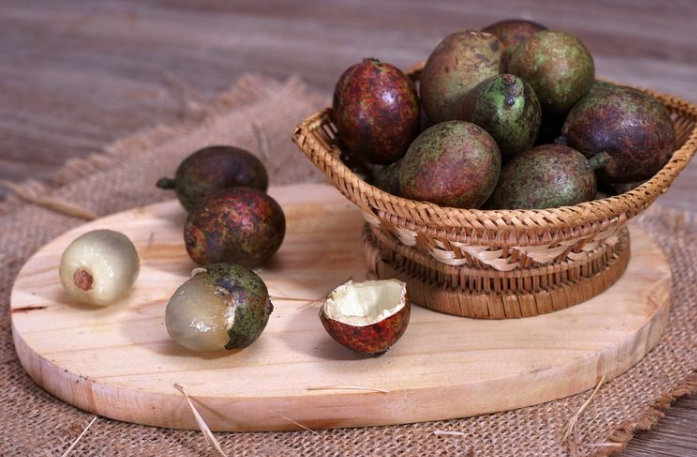PapuaAround.com – Papua’s enchanting natural beauty and rich culture are not the only treasures this eastern region of Indonesia has to offer. Papua also boasts abundant biodiversity, including a variety of endemic fruits with unique flavors and numerous health benefits. Among these fruits, matoa stands out due to its high nutritional content, particularly its rich supply of vitamin C, vitamin E, and natural antioxidants.
Matoa, scientifically known as Pometia pinnata, belongs to the Sapindaceae family and is recognized as one of tropical fruits with strong antioxidant properties. It is well-known among both the local population and the broader scientific community. As the global trend toward health-conscious eating continues to grow, matoa offers a taste of Papua’s seasonal freshness that can be enjoyed in various forms.
Renowned as a tropical plant rich in antioxidants, matoa is packed with nutrients that offer significant health benefits. According to “DRHealth Benefits.com,” this fruit is like a gem that enhances the body’s vitality. “Vitamins C and E are key sources of antioxidants for the body, effectively combating free radicals.”
The danger posed by free radicals, if left unchecked, can lead to cell damage and serious health issues. The “Muhammadiyah Journal of Nutrition and Food Science” delves deeper into this threat, noting that “free radicals in the body pose significant health risks if not addressed.”
Read also: Exploring the Charm of Papua’s Traditional Clothing: A Captivating and Meaningful Cultural Heritage
Furthermore, the benefits of matoa extend to boosting the immune system, reducing stress, increasing energy levels, and supporting fertility. These benefits have been well-documented in various health publications. For those looking to maintain heart and skin health—two critical aspects of human well-being—matoa is said to contain properties that support both.
However, when it comes to accessibility, matoa is considered a fruit that is “still rarely found in the market,” according to DRHealth Benefits.com. The website also advises, “Those who are allergic to lychee or longan should avoid this fruit to prevent allergic reactions.”
Visitors to Papua are not only treated to breathtaking natural landscapes but also to unique souvenirs that carry artistic and aesthetic value. These include noken bags made from native Papuan wood fibers, batik with motifs of the iconic bird of paradise, and globally renowned pearls from Raja Ampat.
Traditional items such as koteka and tifa drums, which are integral to the cultural heritage of Papua’s indigenous tribes, have also become sought-after souvenirs. Additionally, keladi chips, a popular local snack, reflect the diverse culinary traditions of Papua, offering a distinct taste experience for those who try them.
As symbols of Papua’s natural and cultural wealth, matoa fruit and traditional souvenirs represent two sides of a coin, providing not only insights into the benefits of tropical plants but also serving as a testament to Papua’s rich traditions and flavors. So, when you come across matoa fruit or choose a souvenir from the land of Papua, be sure to take home a piece of authentic and highly nutritious Papua.

